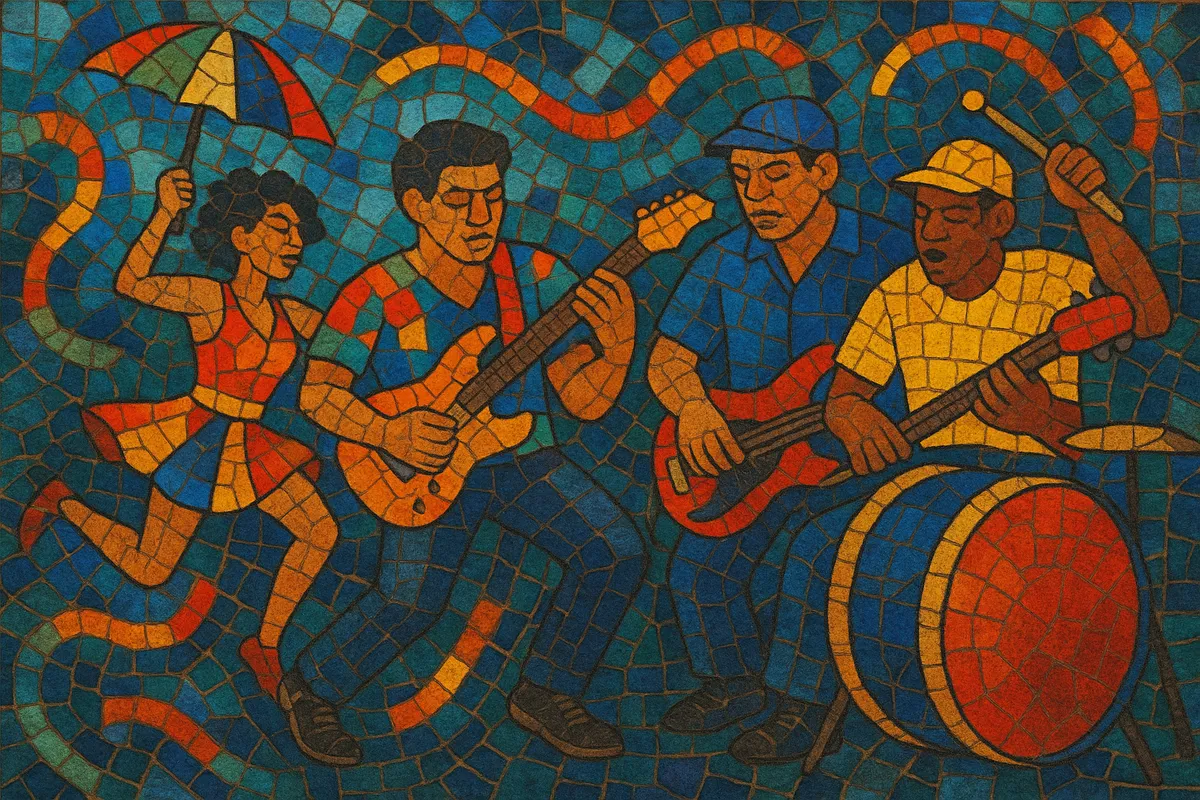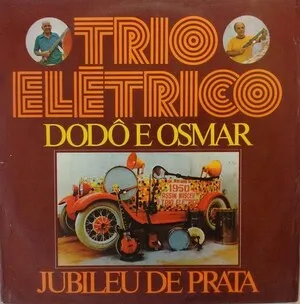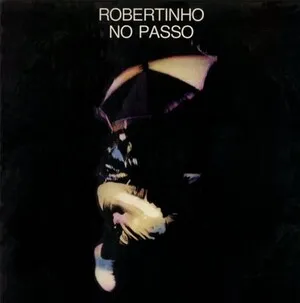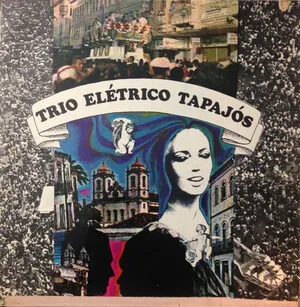Frevo elétrico is the electrified, high-energy carnival form of frevo that translates the original brass-led style into the language of amplified bands and trio elétrico sound trucks.
It retains frevo’s blistering 2/4 meter, rapid melodic runs, and virtuosic counterpoint, but replaces (or doubles) horn lines with guitarra baiana/electric guitar, bass, drum kit, and keyboards.
Born from the encounter between Pernambuco’s frevo tradition and Bahia’s emerging trio elétrico practice, it is designed for large, mobile outdoor performance, with bold riffs, driving percussion, and crowd-rousing breaks that keep dancers in constant motion.
Frevo emerged in Recife (Pernambuco) in the early 20th century as a fast, syncopated carnival music led by brass and percussion. As carnival culture spread and modernized, Bahia’s innovation of the trio elétrico (mobile amplified performance) provided a powerful platform for louder, electrified sounds.
In the early 1950s, Dodô & Osmar (Trio Elétrico Dodô e Osmar) began performing frevos on custom electric instruments (guitarra baiana) atop sound trucks in Salvador. Their approach—translating frevo’s rapid brass melodies to electric guitar with a rock-ready backline—became known as frevo elétrico, aligning frevo with contemporary amplification and mobility.
Through the 1970s and 1980s, artists such as Armandinho Macêdo and Moraes Moreira popularized electric frevo repertoire and technique, recording instrumental frevos and hybrid songs that crossed into Brazilian pop and rock circuits. At the same time, Pernambuco’s carnival incorporated amplified setups, so electric frevo became a feature of both Recife/Olinda and Salvador festivities.
Today, frevo elétrico is a staple of large carnival blocks and trios, with bands deploying blazing guitar leads, tight rhythm sections, and synth/brass layers. The idiom helped pave the way for the trio-elétrico-centered pop scene and influenced axé’s instrumental language, while continuing to coexist with traditional brass frevo forms.





